Unfiltered: What I learned on my visit to Wavegarden headquarters
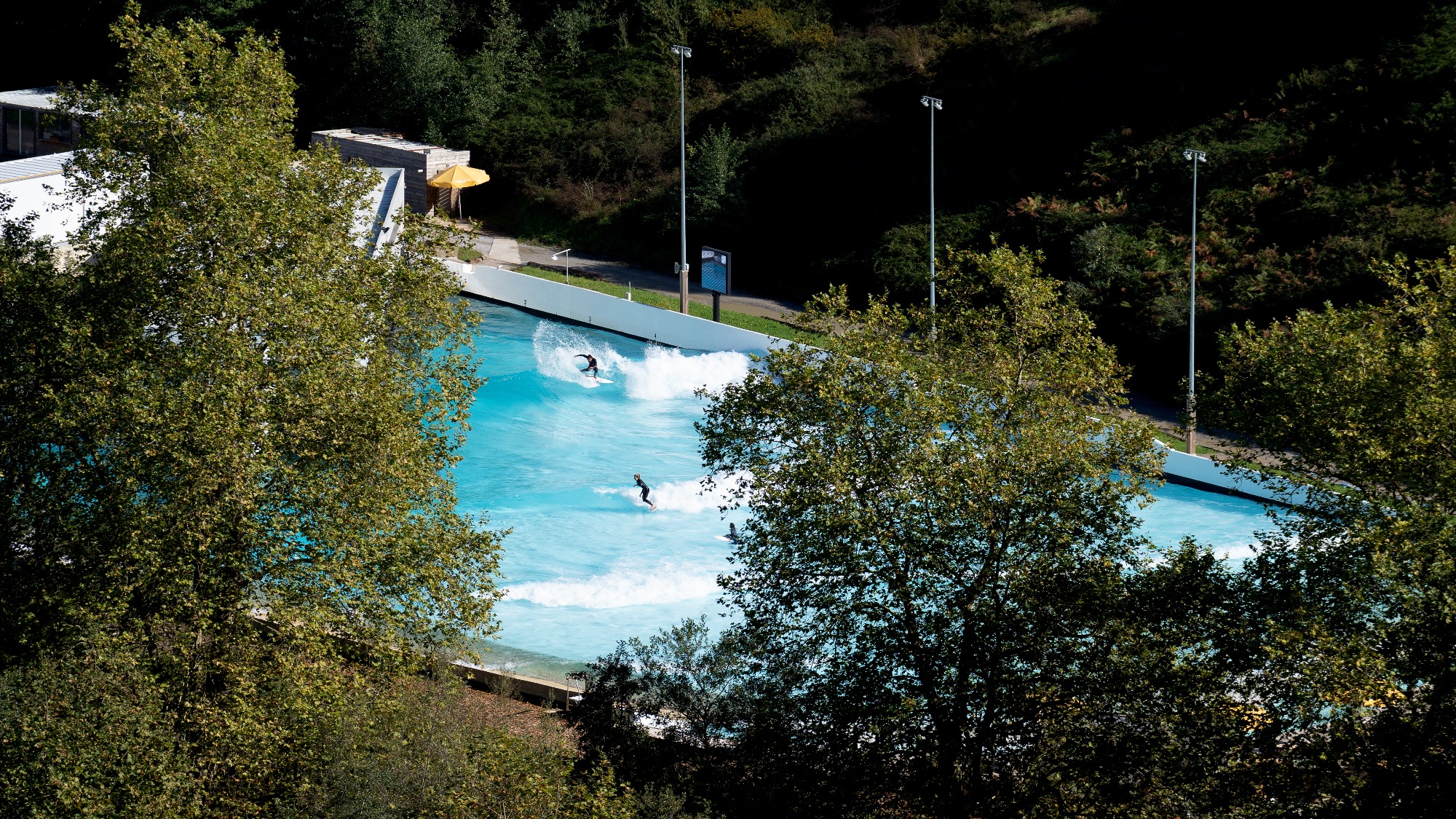
The unlikely location for the next chapter in surfing is near the town of Zaurutz in the Basque Country of Spain. The medieval beach town is home to a thriving surf scene complete with surfboard factory, luxury surf boutiques and an annual WSL event.
Game of Thrones fans can thank the area for Gaztelugatxe, the isthmus setting for Queen Daenerys Targaryen’s Castle, while goofyfoots owe countless daydreams to the spinning lefts of Mundaka just down the road.
Basques have a rich, freakishly productive history. One thousand years ago the nearby ports harbored the world’s best whalers – seafarers who brought the trade to coastal Europeans before seeking richer grounds in North America once resources thinned. The Basque language is the oldest in Europe, possibly spoken around fires in the early Stone Age. The modern world can thank the Basques for berets, jai alai, espadrilles, the introduction of chocolate to the West and now, waves.
Driving to Wavegarden HQ is a visual delight. Pines carpet steep verdant hills occasionally cut by a serpentining road. I follow the main access street to Xoxokua, then catch a sudden glimpse of aquamarine glimmering through the trees (The Cove!). Venturing down the hill past a modest gate, primordial stream and sheep, I roll into the Wavegarden compound. It’s a bivouac of container offices, gravel carpark and the mysterious workings of several wave generation prototypes.
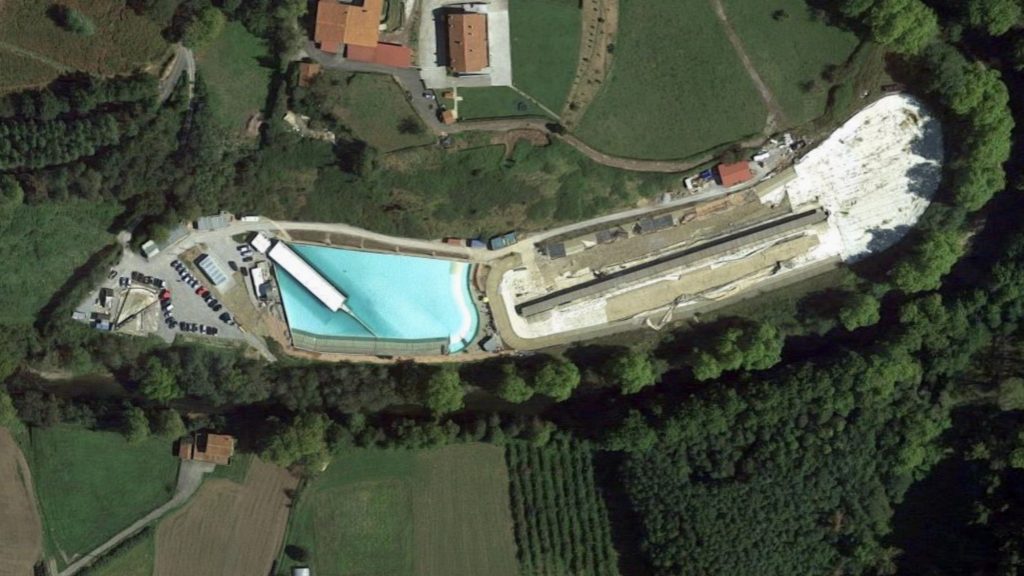
Miles from the ocean the place still has a strong surf vibe, more so than the SoCal industrial parks that house America’s surf industry. There are no surfboards on show, trite team-rider quotes on oversized posters or plastic Hawaiiana. Wavegarden doesn’t have to convince anyone about the coolness of surfing. The world already knows surfing is cool. And by creating the most core product in surfing, (waves), there is no need for any of the peripheral marketing of cool inherent in the surf brands of yesteryear.
WavePoolMag began pursuing a Wavegarden visit when we launched two years ago. Since our introduction we had been fed tightly regulated digital assets from their PR team – usually pros (or more recently Shakira) ripping the HQ facility. But we never received an invite. Until today.
Wavegarden’s Destination Development Advisor Sean Young meets me at the car with an umbrella (despite the sunny photos of the facility it is nearly always raining in the Basque Country). We embark on a quick tour. When the question of photographing the surroundings comes up, he assures me the company has plenty of digital assets – wonderful digital assets for our use. I take this to mean they want to keep a tight grip on what the public sees. There’s a lot of tension in the wave pool space right now as more companies enter the market to make waves. And the digital dream wavemakers project is crucial to landing new clients worth millions of dollars. Mr. Young had just asserted his gatekeeper authority in the most polite way possible. That, or I’m just overly suspicious.
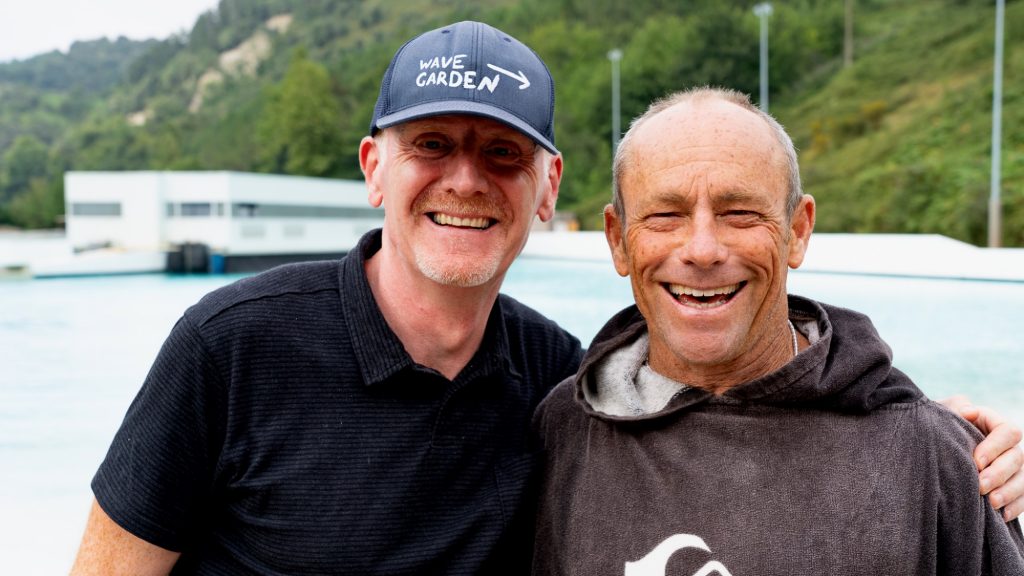
Wavegarden HQ looks a bit like someone dropped a tech startup deep in Bootlegger Country USA. Inside, engineers conference against a backdrop of whiteboards cluttered with math calculations as workers navigate Zoom meetings at different project sites around the world. It’s NASA command-central meets cafe study hall.
Wavegarden started when Josema Odriozola and Karin Frisch decided to apply their skatepark design knowledge to wave-making. The first prototypes for surf came in 2005 with Josema and Karin testing a mysterious circular device, followed shortly after by a tractor pulling a foil the length of a reservoir. It was this experiment that led to the first single direction Wavegarden Lagoon plow design that shook the surfing world in 2010/2011. The team quickly revamped the design to produce both rights and lefts on either side of a central pier, building the facility a few years later in Texas and Wales. 2016 saw the public unveiling of The Cove, the design the company is using today in Melbourne, Bristol, Sion Switzerland, and South Korea. This same style pool is in the planning and construction phase at 30-something sites globally.
But it’s the surrounding grounds that tell the true Wavegarden story without the PR polish. Like some archeological site, rusted skeletons of prototypes and first-generation achievements lay next to thoroughly mysterious pieces of machinery. Trial and error, trial and success. I saw the 1/10 scale Cove prototype left out of media distribution packages. It’s Cove 1.0 complete with change-able bathymetry for testing how waves break in different pool configurations. But without water, it looks more like an abandoned Soviet-era zoo exhibit.
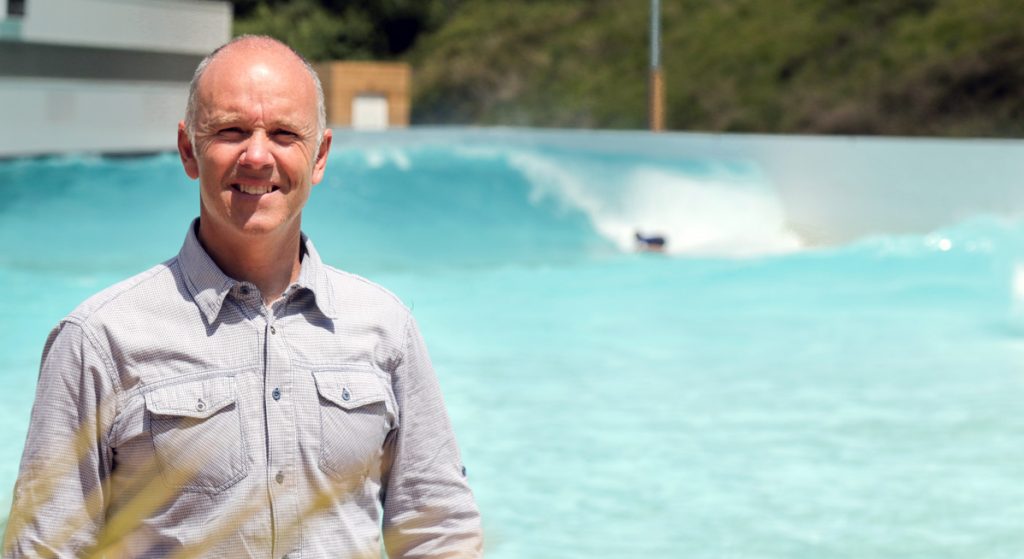
The full Cove prototype, the one mirrored in full-size versions throughout the world is only a right. Flatland is at a premium in the Basque Country of Spain, and the company only had enough room to build the right. In doing so they had to destroy a good chunk of the first-gen foil-track wave-making device. The Lagoon prototype now sits empty and overgrown with weeds. Wavegarden is on to bigger things.
Sean gives me the same presentation he does for anyone interested in purchasing a Wavegarden Cove. He shows off a few new top-secret design sketches and it’s apparent that this first-to-market company is evolving rapidly beyond the Cove design. With 63 employees and immense overhead, they are banking on the oceanless surf sector booming. Right now, as surf parks become a viable commercial product globally, Wavegarden is to wave-making what Apple is smartphones.
After Sean’s presentations, I ask how they filter out the hundreds of inquiries they must get from curious persons. To cut out the those only interested in posting a selfie at Europe’s most famous wave pool, Wavegarden requires a 4-figure sum to visit the space. After the presentation and surf session, serious inquiries go on to pay ten times that amount for the company to explore in-depth the feasibility of building one of their systems. Much of this energy is focused on soil and energy infrastructure assessment. Bad dirt, high water tables and power grid access all radically up the cost of building a surf park.
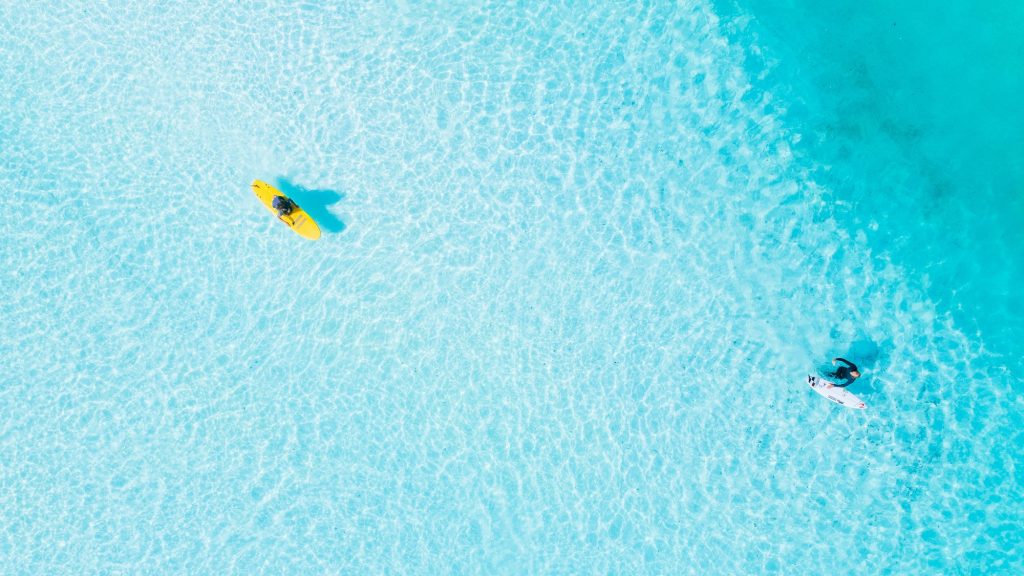
The Wavegarden Cove Test Pool
The full Cove test pool has a beautiful curved deck complete with an easy swimming channel serpentining along the faux shoreline. It is much larger than it looks on Instagram. Shipping containers serve as changing stations and gear storage for employees. A media-hut provides protection for the computer and wave-programming software as well as a warm place for guests like myself to change. It’s quiet here, except for the white noise of the nearby stream. Looking out to the pointy end of the pool I hear a loud metallic “clunk” and watch as the first wave of the lunch hour session rolls out.
Employees can surf for half an hour when the workload allows it. This is the dangling carrot that attracts the best engineers from the Basque Country and beyond. Today the crew is enjoying the Turns 2 wave. All are goofyfoots (like me.) Despite being intermediates, most have surfed this wave enough to throw impressive backhand snaps. As employees paddle back out their ride is displayed on a modest Jumbotron TV – “It can either be really helpful, or hurtful watching yourself surf” Sean had told me. One engineer, an experienced surfer, goes beyond vertical and fits four turns into the wave, a challenging task give the lightness and brevity of the break. The wave programmer, Eneko, announces over the speaker “nueve coma siete” and the lineup laughs. Then remembering that I’m in the pool, he switches to English and repeats the score “nine point seven.” One of the employees wants to try a different wave setting, or request a specific wave. Given my limited Spanish, I’m not sure. but he lets his wishes known by yelling into a crude metal speaker which relays back to the control room.
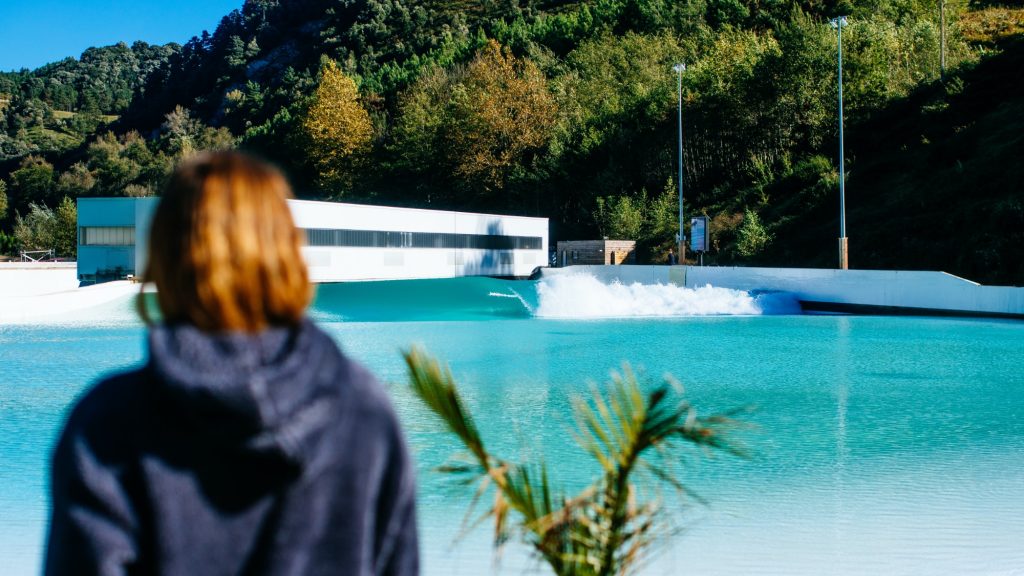
After the employees head back to work it’s my turn to chose a setting. I had told Eneko where I like to surf in France – a sometimes heavy, barreling wave. I forget to mention that I only go left since I suck at backhand barrel riding. This comes back to bite me as I surf half a dozen waves on the tube setting. Paddling back out the Jumbotron reminds me of each sideslip, nose poke and somersault. I finally make the drop on one by outrunning the barrel in a stinkbug rail-grab stance and decide to quit.
When the machine shuts down and the water returns to stillness, I step out of the pool, shake the cold out of my fingers, look around at the hillsides. I give a nod to the sheep in the adjacent field and take a moment to be thankful for such an amazing opportunity. Eneko has to head back to work, but first he offers to show me their slab wave. The deep end of the pool gives a loud clunk and a fat, square wave throws out and spits. I recognise it as the wave celebrated in YouTube clips and on the social feeds of so many pro surfers. It’s not a wave that myself or other average surfers can make. But, it is the wave that sells the wave pool dream to the world.
Related Coverage
